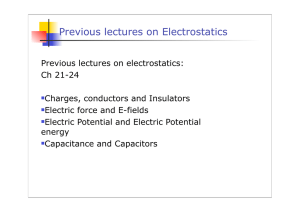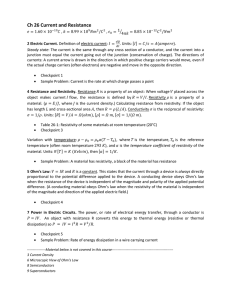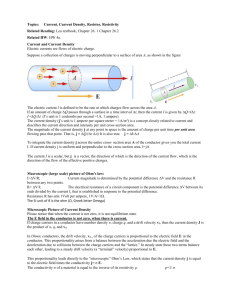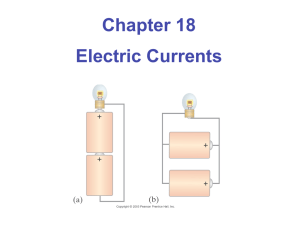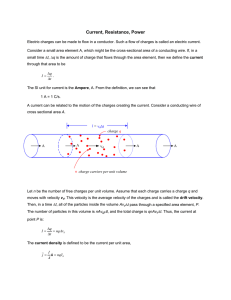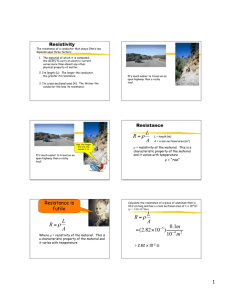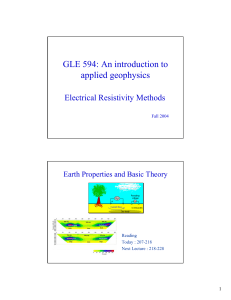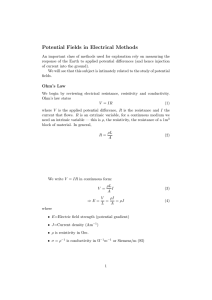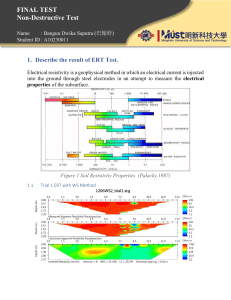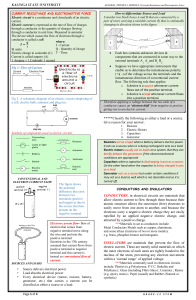Chapter 26 Current, Resitance, and Ohm`s Law
advertisement
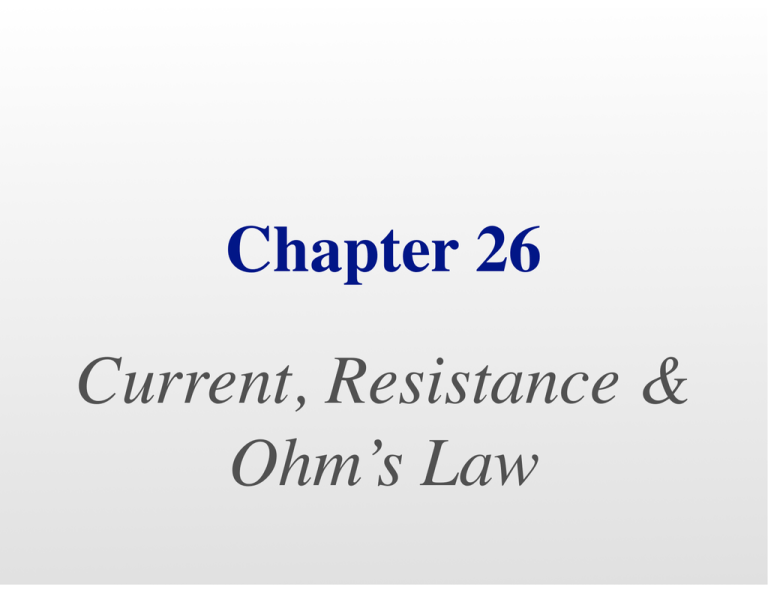
Chapter 26 Current, Resistance & Ohm’s Law Potential difference and charge flow Battery produces potential difference causing flow of charge in conductor Current: I = dq/dt dq is charge that passes the surface in time dt Units: C/s = ampere = A • Drift velocity: average net velocity of electrons ~ mm/s • Signal velocity: speed of electric field = speed of light in the material ~108 m/s V I Device • Ohm’s law: for some devices (conductors), I is proportional to V: I V = IR V • R = Resistance = proportionality constant = V/I I V • Current depends on voltage I I Device and on the device I V V V • Resistance R = V / I, not necessarily constant V I Device • Ohmic material obeys Ohm’s Law: R is constant • R is a property of the device • images: surface mount Resistivity • Property of material; zero for superconductors • For cylindrical conductor: A • R is proportional to L • R is proportional to 1/A L • R is proportional to L / A • Define resistivity ρ as the proportionality constant L R=ρ A Temperature dependence • Resistivity is approx, linear with temperature: Define ρ = a + bT ρ0 = resistivity at T = T0 ρ0 = a + bT0 → a = ρ0 − bT0 ρ = ρ0 + b(T − T 0 ) ρ / ρ0 = 1+ α(T − T 0 ) α = coefficient of resistivity (C º ) -1 ρ = ρ0 (1+ α(T − T 0 )) ⇒ R = R0 (1+ α(T − T 0 )) For metals, α > 0 (resistance increases with temp) For semiconductors, α < 0 (resistance decreases)

